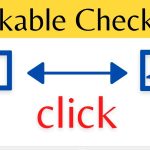Are you looking to improve your college or university’s search engine rankings? As an administrator, I know you’ve got a lot on your plate already. But optimizing your SEO for higher education could be a game-changer when it comes to getting prospective students to choose your school.
I definitely don’t have all the answers. But I’ve picked up some best practices that have worked at my institution. Hopefully, they’ll give you ideas for your own SEO efforts as well!
Why SEO Matters in Higher Ed
I don’t need to tell you that the college search process is increasingly happening online. Students and parents turn to Google before they ever talk to an admissions counselor.
So where does your school turn up in those search engine results? Hopefully pretty high up!
Strong SEO helps you:
- Attract more prospective students: Top search rankings drive more website visitors and brand awareness.
- Reinforce your school’s authority: Search engines reward websites that publish quality, in-depth content.
- Support enrollment goals: More visibility and leads impact everything from application numbers to campus tour attendance.
But I get it—search engine optimization seems complicated. There’s a lot of chatter out there about backlinks, metadata, and keyword density.
The key is not sweating the SEO details. Focus on creating content that engages prospective students. The search visibility will follow.
Trust me, you don’t need to obsess over title tags and image alt text. SEO goes much deeper than that.

Start With Understanding Intent
Here’s my number one tip when it comes to SEO for higher education:
Understand what users are looking for—and give it to them.
Simple, right? If only it were that easy!
The key is recognizing different types of user intent behind higher ed searches. Students don’t just search for your school name. Here are some of the common things prospective students want to know:
Informational queries
These are more general searches to learn about options.
Examples:
- Best college majors
- Online degree programs
- Jobs you can get with an English major
Your content should educate and address common questions. Helpful, informative content earns trust.
Navigational queries
These searches use your school’s name or abbreviations.
Examples:
- East State University
- ESU acceptance rate
For these, focus on onboarding visitors who already know you. Make key info easy to digest.
Transactional queries
These indicate someone’s ready to engage your school!
Examples:
- ESU application deadline
- ESU tuition costs
- ESU student login portal
Optimize conversion paths for these valuable prospects. Remove roadblocks to taking action.
See the difference in intent? Tailor your content accordingly.
And remember—search queries constantly evolve. Stay on top of trends with keyword research. More on that later!
Craft Content That Connects
Alright, mindset shift time. Stop thinking about SEO as a website add-on.
SEO is about understanding users and crafting content that connects.
“Content” means blog posts, videos, images, press releases, social media…you name it.
Ask yourself:
- What information do my prospective students want most?
- What questions and concerns do they have during their college search?
- How can I produce content that speaks to their informational needs?
Personalized, emotional connections drive decision-making. Help real students see themselves at your university through content.
Share photos and videos of real campus life. Capture school spirit at a football game! Profile current students studying specific majors.
Address common questions and concerns about paying for college or picking classes. Empower student success with study tips or insights on landing an internship.
This high-quality content will naturally attract links and shares. Which boosts your organic search performance.
See—you’re focusing on connections, not keywords!
Optimize Your Website Navigation
Alright, let’s shift gears a bit and talk website structure. Even the best content gets buried without solid site architecture.
Think about your school’s website navigation from a prospective student’s eyes. Is it easy for visitors to:
- Find the degree programs they’re interested in?
- Access admissions and enrollment information?
- Locate campus life deets and student resources?
Key landing pages should be reachable within 1-2 clicks from your main menu. Don’t hide content behind complex site maps.
Prioritize key conversion pages in your top-level site hierarchy:
- Academics / Degree Programs
- Admissions / Apply
- Tuition & Aid
- Campus Life
- Current Students
Pro Tip: Create dedicated landing pages around popular academic offerings like Nursing, Business, Engineering, Education degrees, etc. These niche pages better target relevant search queries.
Also ensure your site architecture includes:
🗺️Sitemaps: XML sitemaps make it easier for search engines to crawl all your site content.
📎Breadcrumb navigation: These page trails (Home » Academics » Undergraduate » Business) guide users. Plus help search bots understand page hierarchy.
💬Schema markup: Schema code enhances how your content appears in Google listings (more clicks!). Allows for rich search snippets.
An intuitive website structure reminds visitors—”Oh right, this school has the program/info I want!”
Win With Compelling Page Copy
I’m beating a dead horse here…but crafting quality content really is key for higher ed SEO for higher education.
And that includes the copy and messaging on each webpage—not just your blog.
Every page title, meta description, content section, image alt text etc. creates an opportunity to resonate with prospective students.
A few tips for page-level copy:
📋 Highlight what makes your school stand out. Show off unique academic programs, top-ranked departments, award-winning faculty, standout research…you get the gist.
🤝 Adopt an inclusive, welcoming tone. Use language and imagery that engages diverse learners from all backgrounds.
🔍 Front-load essential info. What admission requirements or key program details do visitors need most? Lead with that.
☝️ Speak to prospective students directly. Use second-person perspective and active voice.
🧠 Share knowledge! Incorporate FAQs, stats, expert insights that educate. Demonstrate thought leadership.
Compelling copy provides value and answers questions. It also includes relevant keywords search engines look for.
Review page copy across your site through an SEO lens. What refinements could better appeal to prospective students?
Even small tweaks can impact search rankings and conversion rates.
Choose Keywords Like a Pro
Alright, alright—I realize I can’t write an entire SEO article without mentioning keywords!!
Here’s the deal: Keywords remain critically important for search visibility. But obsess less over volume and density.
Instead, focus on driving content creation around strategic keyword groups.
Not sure where to start? Keyword research takes the guesswork out.
Tools like Google Ads, SEMrush, Soovle, UberSuggest, Answer The Public and others generate keyword ideas grouped by topic and search volume.
Look for keyword opportunity around:
- Specific majors / programs
- Campus life elements
- Common student questions
- Location-based terms
- Topic-driven searches around application requirements, online programs, scholarships etc.
Group keywords by theme to develop content buckets—then crank out posts, videos, program spotlights accordingly.
This strategic framework means you’re targeting phrases with strong student search volume. But with a high-funnel, educational focus. Not brute-force over-optimization.
Review keyword reports quarterly to stay on-trend with the hottest search queries. Then evolve your content strategy accordingly.

Measure What Matters Most
Alright team, all this effort needs to drive results, yeah?
SEO success means visibility, traffic, and engagement—not keyword ranks alone.
Set goals around actions that communicate student interest:
- Website sessions
- Average session duration
- Pages per session
- Drop-off rates
- Form fills / demo requests
- Campus tour bookings
- Application completion rate
Connected goals like this quantify how your content resonates during the student journey.
Assign dollar values to conversions at critical enrollment funnels. How much is an event booking or application worth?
This helps frame SEO for higher education ROI and inform budget decisions.
Build short, medium and long-term projections across student engagement KPIs. Then crank up the content machine!
Review and Refine
Whew, that was quite the SEO info dump huh? Let’s wrap up with the key takeaways:
#1) Base all content around searcher intent buckets: informational, navigational, transactional. Meet visitors where they are in their journey.
#2) Craft a website structure and page-level copy focused totally on prospective students. Make info easy to digest.
#3) Unpack keyword themes driving relevant organic traffic to your site. Research data informs content planning.
#4) Have success metrics in place connected to downstream conversion actions—not just SEO ranks! Enable data-driven decisions.
Then finally… don’t settle! Continuously review your site analytics and iterate based on what the data says.
What SEO refinements create more visibility? How can content better nurture prospects? Channel that curiosity into constant optimization and evolution.
Well, those are my best tips for ramping up your college’s SEO. The key is keeping it focused on prospective student connections—not playing keyword games.
Hopefully you picked up some useful nuggets to try on your campus. Let me know if any questions pop up along the way. Happy optimizing!
FAQs
What are some quick SEO wins for my university website?
Some quick fixes that can improve site visibility include:
- Optimizing page title and meta descriptions with keywords
- Adding alt text to images for better discovery
- Ensuring site pages load quickly with optimized images
- Building additional backlinks from social channels
- Creating an XML sitemap to facilitate crawling
What SEO mistakes tank higher education websites?
Common SEO pitfalls universities make include:
- Focusing too narrowly on one element like metadata or backlinks rather than holistic optimization
- Failure to create content aligned with student searcher journeys and intent
- Not expanding link-building efforts beyond .edu domains
- Chasing high-competition keywords with low conversion potential
- Neglecting site speed which impacts organic rankings
How much budget should we allocate for SEO at a college?
Budget allocation depends on the scale of your SEO goals. On average, schools spend 5-15% of their digital marketing budget on organic search. For context, small colleges may invest ~$1,500 a month in SEO. Large universities could spend $15k+ optimizing high priority landing pages.
When will we see results from higher ed SEO efforts?
Simple keyword and metadata optimizations may create quick upticks in site visibility. However, building authority around topics takes time. Often it requires 6+ months of focused content generation before driving measurable increases in relevant organic traffic.
How do you optimize individual webpages for search at a college?
With each page, ensure you:
- Have a unique, keyword-rich title that grabs attention
- Use a meta description that generates clicks and summarizes the content
- Structure page content with relevant keywords and subheadings
- Include schema markup to enhance indexing
- Insert image alt text targeting related terms
- Link out to complementary evergreen pages on your site
Last Words
There’s no denying that SEO for higher education brings valuable visibility and website traffic for colleges and universities. But gone are the days of keyword stuffing and shady link schemes.
Discover the key to unlocking online visibility with SEO for Gyms, where we guide you through crafting content tuned into diverse fitness needs. Just as in education search engine optimization, empower potential members at every stage, from exploring fitness interests to finding the perfect program, ensuring they apply with ease for a healthier and more active community.
Continue conversing after the initial click as well. Empower learner success through thoughtful blog content, social media engagement and optimized site navigation.
Approach SEO for higher ed with the right mindsets and metrics, and your school will reap the lead generation and brand awareness rewards.







